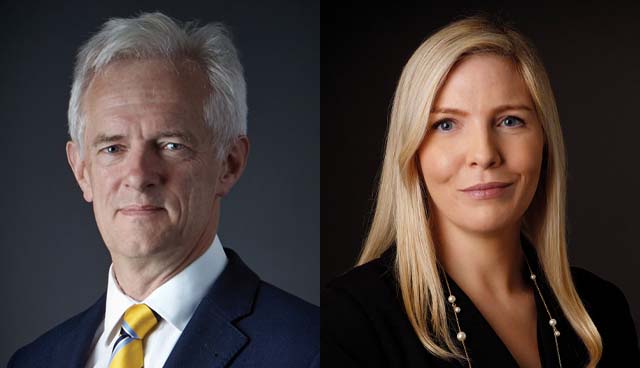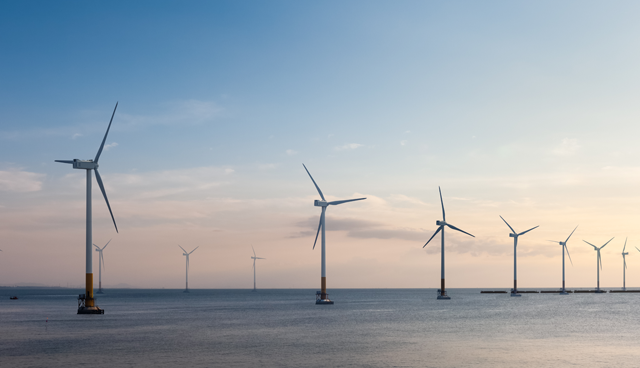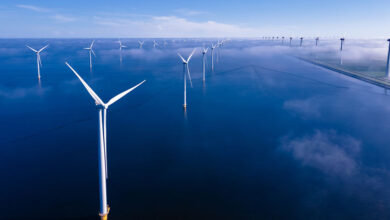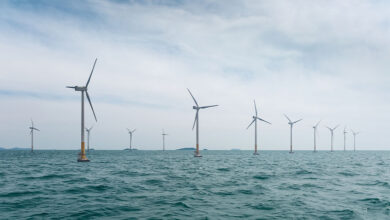TEN-E Regulation: No longer oceans apart

Ireland and Europe must decarbonise energy completely by 2050. Offshore renewable electricity is going to form the backbone of these efforts to decarbonise. In 2020, the EU published its European Offshore Wind Strategy which included the objective to have an installed capacity of 300GW of offshore wind by 2050. That is nearly 55 times the current total installed wind capacity on the island of Ireland which is 5.5GW. Philip Lee, Partner and Executive Chairman, and Siobhán McCabe Energy Partner at Philip Lee, write.
Meeting these targets and objectives will require massive scaling up of the development of offshore projects and at the greatest of speed, unparalleled with any past development of other energy technologies.
Ireland has one of the best offshore renewable energy resources in the world. The seas of Ireland have some of the highest wind speeds globally, and more importantly unlike other areas with high wind speeds, the Irish seas are located close to massive centres of consumption, namely mainland Europe. Irish offshore wind has huge potential. However, transporting the energy from these offshore wind farms to mainland Europe will be a herculean task and will require the investment of billions of euros in the necessary infrastructure.
A large part of the answer to how this can be achieved is found in the revised Regulation of the European Parliament and of the Council on guidelines for trans-European energy infrastructure, the TEN-E Regulation. A proposal to revise the TEN-E Regulation was adopted in December 2020 for the purposes of modernising the existing regulation and to fully align it with the Green Deal objectives and was finally agreed following trilogue negotiations between the EU institutions at 5am on 15 December 2021.
In essence, the TEN-E Regulation sets out guidelines for linking the energy infrastructure of EU countries needed to achieve the EU’s climate neutrality objective by 2050 and outlines the process for selecting projects eligible to receive EU funds and policy support.
The TEN-E Regulation focuses on projects of common interest (PCIs) which are infrastructure projects considered necessary for delivering on EU objectives in the energy field. Typically, PCIs involve at least two member states by crossing the border of two or more member states or the project is located on the territory of one member state and has a significant cross-border impact.
However, of great importance to Ireland is the fact that the TEN-E Regulation also includes within its scope projects of mutual interest (PMIs). Essentially PMIs are similar to PCIs, except that they involve projects connecting the EU with third countries, such as in Ireland’s case, the UK. In order to come within its scope, PMIs will need to demonstrate that they bring significant benefits at EU-level. In addition, the third country will need to demonstrate high level of convergence of the EU policy framework and legal enforcement mechanisms to support the overall policy objectives of the EU. The third country must also commit to facilitate a similar timeline for accelerated implementation and other policy support measures as stipulated in the TEN-E Regulation. It will be of fundamental importance to Ireland that the UK is considered to comply with these third country requirements for the success of PMIs and, at first glance, this appears to be the case. There is no doubt that projects proposed to be developed offshore and not so accredited as PCIs or PMIs will struggle.
The TEN-E Regulation identifies priority corridors which cover different geographic regions in the field of electricity, gas, and oil infrastructure as priority areas for investments. EU support for development in these corridors will connect regions currently isolated from European energy markets, strengthen existing cross-border interconnection and assist integrated renewable energy. Of particular interest to Ireland is the electricity corridors and offshore grid corridors. In respect of electricity corridors, Ireland is a member of the regional group the North South electricity interconnections in Western Europe (NSI West Electricity) which relates to interconnections between member states of the region and the Mediterranean area. Ireland is also a member of the Northern Seas offshore grid (NSOG). This regional group focuses on offshore electricity grid development, integrated offshore electricity including, where appropriate, hydrogen grid development in the North Sea, the Irish Sea, the Celtic Sea, the English Channel, and neighbouring waters to transport electricity or in some cases hydrogen from renewable offshore energy sources to centres of consumption and storage or to increase cross border renewable energy exchange.
The TEN-E Regulation requires member states to give PCIs and PMIs priority status to ensure rapid administrative treatment. In order to simplify and expedite the permitting process, each member state is required to nominate a competent body to coordinate the process and to ensure that a maximum period of three-and-a-half years is allowed for the totality of the planning process (subject to an extension of nine months). In Ireland, An Bord Pleanála has been nominated as the relevant authority for this purpose.

“The seas of Ireland have some of the highest wind speeds in the world and more importantly, unlike other areas with high wind speeds, the Irish seas are located close to massive centres of consumption, namelymainland Europe. Irish offshore wind has huge potential.”
Perhaps the most exciting provisions of the TEN-E Regulation are those dealing with the integrated offshore development plans, which will be included in the 10-year network development plans (albeit agreements made under these provisions will be non-binding). Member states, with the support of the Commission, will now jointly define and agree on the amount of offshore renewable generation to be deployed within each sea basin by 2050, with intermediate steps in 2030 and 2040. These objectives will be based on the national energy and climate plans, the offshore renewable potential of each sea basin, environmental protections, climate adaptation and other uses of the sea, as well as the EU’s decarbonisation targets. By the end of July 2023, the ENTSO for Electricity, with involvement from others, will develop integrated offshore network development plans for each sea basin. These strategic plans should provide a high-level outlook for future offshore generation and interconnection.
The TEN-E Regulation will drive the collective planning and development of cross-border energy infrastructure and offshore projects, creating a more integrated energy system. The development of offshore grids and offshore connections will determine Ireland’s future and role in this energy revolution. However, for Ireland to succeed, there must be immediate additional human and financial resources allocated to all of the institutions involved, including An Bord Pleanála, MARA and the courts. Progress must commence immediately on developing PCIs and PMIs. The development of these projects and infrastructure will enable Ireland to achieve climate neutrality, become a centre of energy production exporting green energy to mainland Europe, and be energy secure for the first time in its history.
E: plee@philiplee.ie
smccabe@philiplee.ie
W: www.philiplee.ie
![]()





